|
|||
|
Even though this article is about a movie and a book, let’s start with a ride. It started as a smart plan by Imagineer Tony Baxter to populate a new, state-of-the-art log flume ride with the existing, soon-to-be-retired menagerie of valuable Audio-Animatronic critters from Disneyland’s America Sings. |
|||

Photo by Werner Weiss, 2004 A popular Disneyland Park attraction |
|||
|
The ride would inherit classic Disney magic from a 1946 Walt Disney movie. New Audio-Animatronic characters from that movie would join the relocated cast. The soundtrack would be based on the movie’s catchy and beloved music. However, the movie’s live-action star would be completely missing, in any form. The result was Splash Mountain, and it hit a home run when it opened at Disneyland in 1989. Sparsely visited Bear Country became busy Critter Country. In fact, the ride was so well received by Disneyland guests that versions of Splash Mountain were soon approved for Magic Kingdom Park and Tokyo Disneyland—even though these two parks did not have any soon-to-be-retired America Sings critters to serve as the cast. The two newer versions both opened in 1992. |
|||

Photo by Allen Huffman, 2005 View from the top of the final drop at Splash Mountain, Disneyland Park |
|||
|
And what was the movie that gave the ride its magic? It was The Movie That Must Be Hidden From View—actually Walt Disney’s Song of the South—a combination of live action and brilliant animation based on the Uncle Remus stories of Joel Chandler Harris. Originally released in 1946, Song of the South was re-released to American movie theaters in 1956, 1972, 1980, 1986... ...and then never again. Disney also never sold it in the United States on Laserdisc, Beta, VHS, DVD, or Blu-ray. |
|||
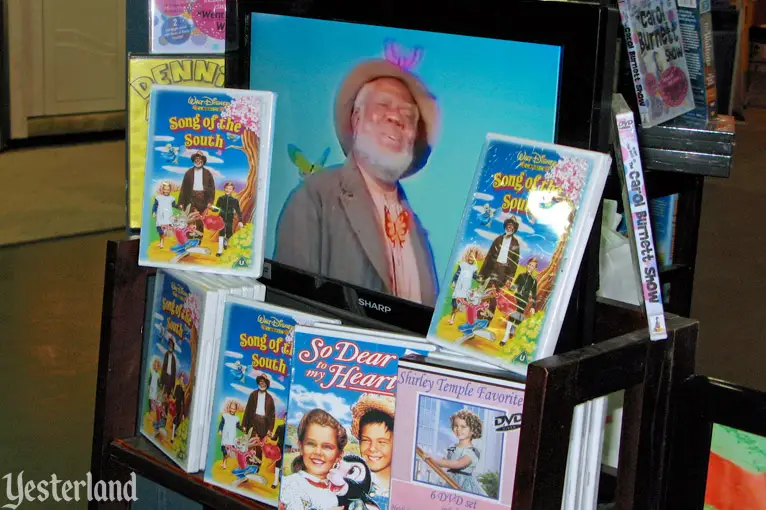
Photo by Werner Weiss, 2010 Bootleg DVDs of Song of the South at the Illinois State Fair, August 2010 |
|||
|
It’s not that the Disney Company doesn’t like to make money off its feature films from the past. But, in the case of Song of the South, the company is willing to forgo the revenue because of widespread objections to some aspects of the movie’s content. That doesn’t mean you can’t find Song of the South. I wasn’t looking for it when I came across an Illinois State Fair booth with a television showing the movie surrounded by piles of DVDs in packaging that resembled official Disney products—but were not. (I didn’t buy it because I don’t want to support such activity.) |
|||

Photo by Werner Weiss, 2012 Author Jim Korkis at Magic Kingdom Park |
|||
|
Disney historian Jim Korkis has written a book about Song of the South. I enjoyed the book very much, and I’m not just saying this because Jim is a friend and an occasional contributor of content for Yesterland articles. From the book’s title, you might think it’s just about the controversy. But there’s much more to it, starting with why Walt Disney chose to make a movie based on the Uncle Remus stories, continuing with the film’s “making of” story, and covering all aspects of the film at a level that keeps the stories interesting, rather than getting too bogged down in unimportant details. When you get to the end of page 104, you’re at the end of the Song of the South parts of the book. Then, through page 264, you’re treated to 17 essays about varied topics, all having in common that they could be considered controversial or surprising for Disney, if not actually forbidden. Did you know the Mickey Mouse comic strip ran a ten-day series of Mickey trying to commit suicide, at the personal suggestion of Walt Disney? Or how about a “making of” documentary about The Emperor’s New Groove that Disney doesn’t want you to see, even though the documentary is Disney-branded? Along the way, Jim deals with the truth behind several urban myths about Disney. I had a chance to interview Jim about his book, the “banned” 1946 film, and the controversy. Werner Weiss: In a way, you have two books within the covers. Why did you combine the two in one volume instead of developing two separate books? Jim Korkis: Just mentioning the film Song of the South was going to be controversial. There are strong defenders of the film and strong opponents. Even just limiting myself to the facts surrounding the making of the film without any emotional prejudice was going to stir up people just because of the subject matter. There are other topics in Disney history that generate that same response whether it is the little black centaurette in Fantasia or the Disney company making sex education films. Werner: In other words, one major controversial Disney topic and 17 additional ones... Jim: In fact, the original draft of the chapter about Disney’s “The Story of Menstruation” was to appear in my book The Vault of Walt, but was removed at the next-to-last moment without my previous knowledge by the publisher of that book who felt it was inappropriate. I decided that this book was my chance to tell some of those stories because they would not fit comfortably into a different book. The facts surrounding those topics needed to be documented for a wide audience and future researchers. One book seemed the best way of achieving that goal. |
|||

Photo by Allen Huffman, 2007 Picture of Br’er Bear at Splash Mountain, Magic Kingdom Park |
|||
|
Werner: I saw Song of the South in a movie theater in 1972. But for Yesterland readers who have never seen it, please describe the film. Jim: The live-action story is about a young boy named Johnny who is taken by his estranged parents to live on his grandmother's plantation in Georgia shortly after the Civil War. The boy has difficulty adapting to his new home even after making friends with a poor white girl named Jenny and a rambunctious black boy named Toby. He encounters an old black storyteller named Uncle Remus, who tells him tales of Br’er Rabbit, Br’er Fox, and Br’er Bear. These stories help the boy learn some important lessons about life, and are told in animation scenes created by six of Disney's iconic Nine Old Men. The film is considered Walt Disney’s first live action film since the animation only comprises about one-third of the running time. Werner: The controversy about Walt Disney’s Song of the South began even before the movie was released to theaters. You did a great job telling why Song of the South was the target of protests and the nature of the concerns about the movie. In the book, you don’t take a personal position condemning or defending it. You prefer to present the viewpoints of others. Jim: Yes, I tried to present just the facts and allow the reader to come to his own decision. The more research I did on the film, the more I could clearly see and agree with the arguments for both sides. Werner: It’s amazing to me that some people feel Song of the South is just a charming and completely inoffensive fantasy, while some others are convinced it’s an overtly and intentionally racist movie. Jim: Personally, I believe the film should be available, if for no other reason than the fact that it doesn’t continue to stir up these uninformed reactions that the film is maliciously racist. On the other hand, I can see that people will refuse to look at the film in the context of the time in which it was made and never see how racially innovative it was in many ways. Those people will insist on seeing it with today’s perspectives and will also worry that despite all the other information that children are exposed to these days, that kids will not be smart or sensitive enough to see that it is just a fantasy film with some good moral lessons and not an historical documentary. |
|||
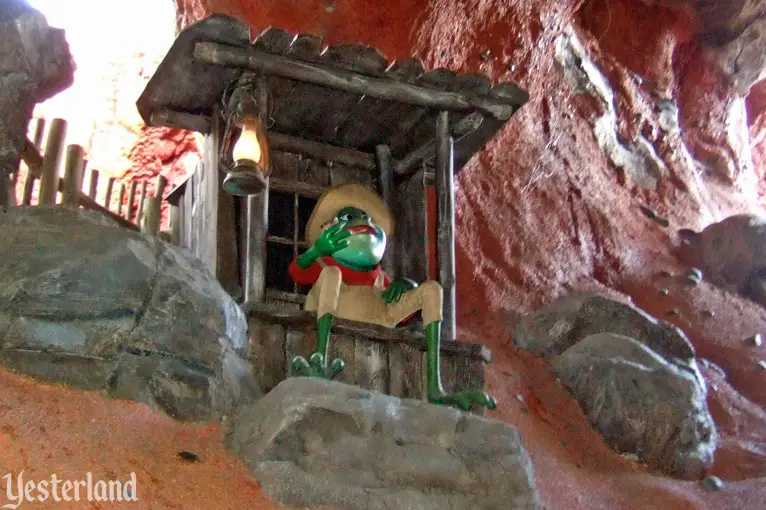
Photo by Allen Huffman, 2007 Storyteller Br’er Frog in Splash Mountain, Magic Kingdom Park |
|||
|
Werner: Disney CEO Robert Iger has made it clear on several occasions that we should not expect to see Song of the South released in any form. Any thoughts? Jim: I think the Disney Company has made a major mistake by hiding the film, because it makes it all the more tempting as “forbidden fruit.” Some of the most vehement opponents of releasing the film have never even seen it. It has been released extensively elsewhere, from South America to Europe to Asia. In the United Kingdom, they have even run it several times on the television channel BBC2 without any complaints or rioting in the streets. Werner: People have suggested that The Walt Disney Company could solve the dilemma by releasing Song of the South on a disc that surrounds the 1946 movie with introductions and analysis, helping viewers understand the context and concerns, as well as delving into the artistry. Jim: I do lean to having the film being released in a restricted format where there is additional material to put it all into proper perspective. I do not think it is a good idea to ban films or books. There are many, many more worse films out there in terms of racial themes from The Birth of a Nation to Gone with the Wind and yet they are all available for viewing without any restrictions. Unfortunately, Disney is always a tempting target for attacks so I can see why they are hesitant to release the film in the United States. Werner: But people watching Gone with the Wind tend to be adults, while Song of the South would widely be seen by children. Jim: No matter how sensitive or comprehensive any special material surrounding the film itself, the bottom line is that many people, even for just babysitting purposes, will just put in the film and run it over and over like any other Disney animated film without ever checking out the “extras.” Werner: I think all Disney “classics” have been released in the United States on DVD, with just the exception of Song of the South. Jim: The Disney Company has very little to gain financially by releasing the film in the United States but a great deal to lose in terms of public relations if not handled with care. However, like others, I do have hope. The Disney Company has released some pretty strong propaganda World War II animated shorts made by the studio as well as some of the “politically incorrect” moments in Mickey Mouse and Silly Symphony cartoons and those releases did not stir up any backlash. |
|||
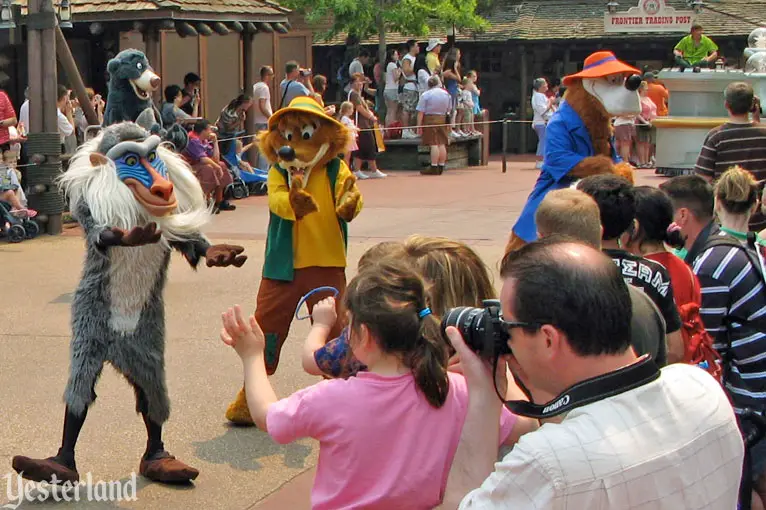
Photo by Werner Weiss, 2007 Baloo, Rafiki, Br’er Fox, and Br’er Bear during a parade at Magic Kingdom Park |
|||
|
Werner: By not seeing Song of the South, what are people missing? Jim: Song of the South has so many virtues to recommend it—from James Baskett’s Oscar Award-winning performance as Uncle Remus, to some of the best animation ever done by the fabled Nine Old Men, to some memorable music to the first Technicolor work ever done by fabled cinematographer Gregg Toland, to some strong design work by Mary Blair—that it would be a shame if audiences would be denied the chance to enjoy and study that work. Werner: Do you think that filmmakers today could bring the Uncle Remus stories to life in a way that would not stir up the controversy that Walt Disney’s 1946 effort did? Or would a movie in which an Uncle Remus character, in the context of the 19th century South, retells stories that originated as African folklore just be too loaded with potential problems? Jim: Today, the situation is even more sensitive than when the film was first released. For example, new films are in the awkward position of not even being able to use historical dialects from the period. I think that people have not just become sensitive to racial themes, but sometimes overly sensitive to the point that it is uncomfortable to even think about addressing the topic. It is clearly awkward just to talk about Song of the South in today’s society. Werner: So we won’t see new Uncle Remus stories on film... Jim: There have been some animated versions of the Br’er Rabbit tales released in the last few years, but because they were not done by Disney and were not done with the skill of Disney, they have not even been a topic of conversation. I think the Uncle Remus tales are good stories and part of the American heritage... not just Black America but all Americans. I am sad that they have been stolen from future generations by overly cautious guardians who find it easier to eliminate things rather than to address them honestly. |
|||
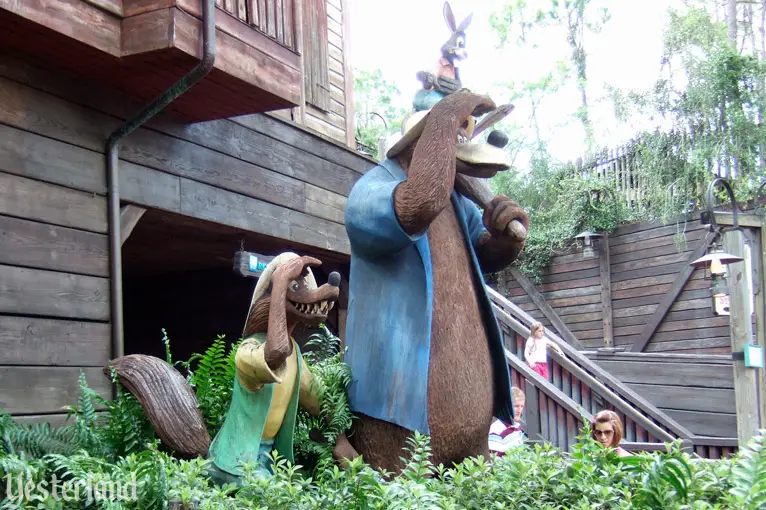
Photo by Allen Huffman, 2007 Sculptures of the main characters, Magic Kingdom Park |
|||
|
Werner: In addition to the new book, you have an updated edition of The Vault of Walt, with five chapters that weren’t in the original version. Jim: I hope that both of my books can spark discussions, provide information to enhance the Disney experience and document some stories that have been in danger of being forgotten and lost. Werner: You write about things that the Disney Company doesn’t cover in its own books. Jim: I grew up loving all things Disney and I still do. I don’t think it benefits anyone to not tell these stories. I try to present the stories in self-contained “bite size” chunks and try to offer enough variety that there is something for everyone to enjoy. I am not trying to incite rebellion. I am not trying to annoy or embarrass the Disney Company. I am just trying to tell some stories that I would like to read. Werner: Thank you! |
|||
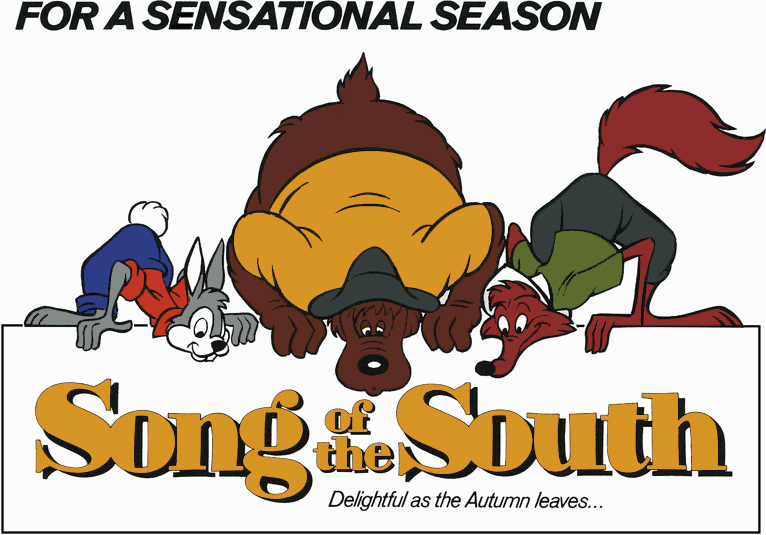
© 1980 Disney Advertising artwork from the back cover of Disney News, Fall 1980. |
|||
|
About the Author Jim Korkis is a well-known, respected Disney historian who has been researching and writing about Disney history for over thirty years. His research has garnered international acclaim for recording previously unexplored areas of Disney history, and his extensive expertise and knowledge is used often by The Walt Disney Company itself for special projects.
Who’s Afraid of the Song of the South? [ISBN: 978-0984341559] is available from Amazon: |
|||
|
|||
|
|
|||
| Click here to post comments at MiceChat about this article. | |||
|
|
|||
© 2013-2020 Werner Weiss — Disclaimers, Copyright, and Trademarks Updated June 12, 2020 Disclosure per FTC guidelines: Werner Weiss was sent a copy of the book Who’s Afraid of the Song of the South? And Other Forbidden Disney Stories for review. Mr. Weiss does not receive any financial consideration from Jim Korkis or Theme Park Press. |
|||
